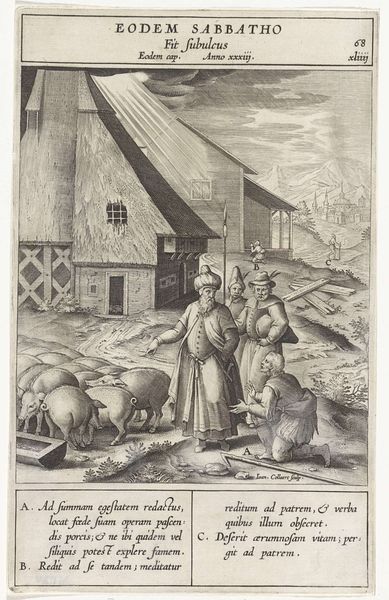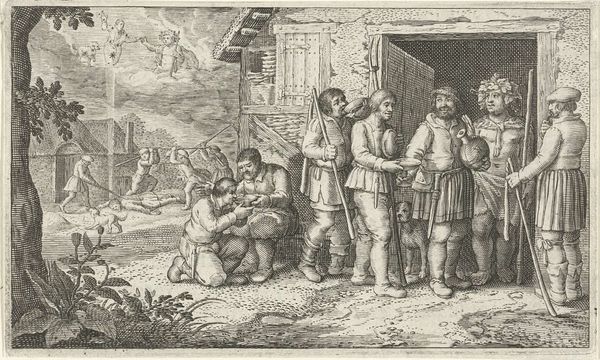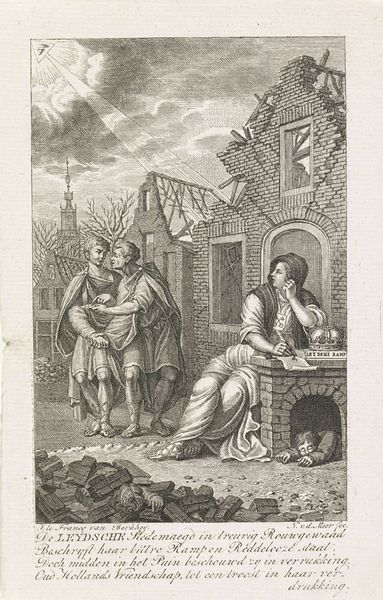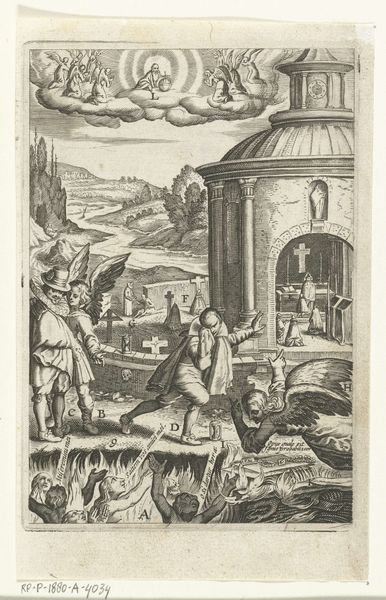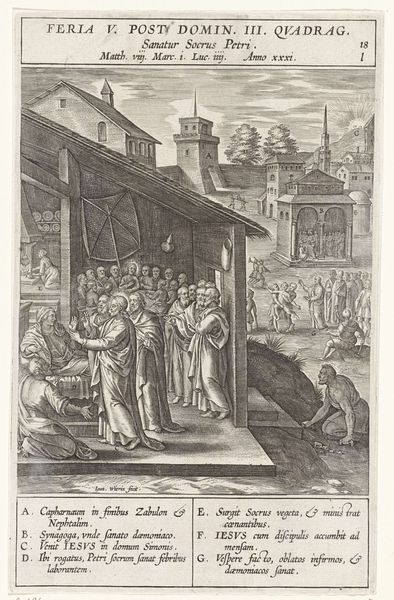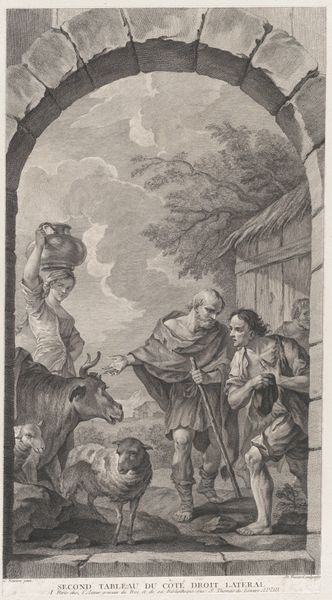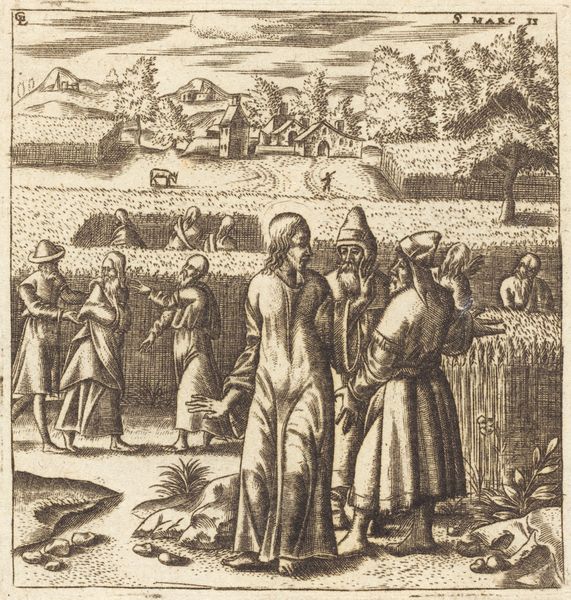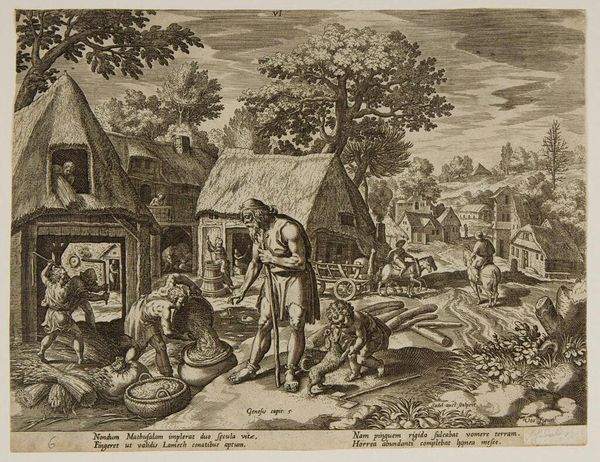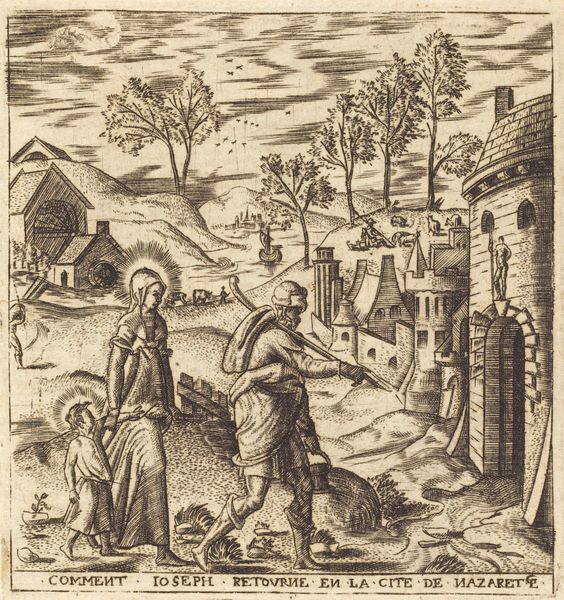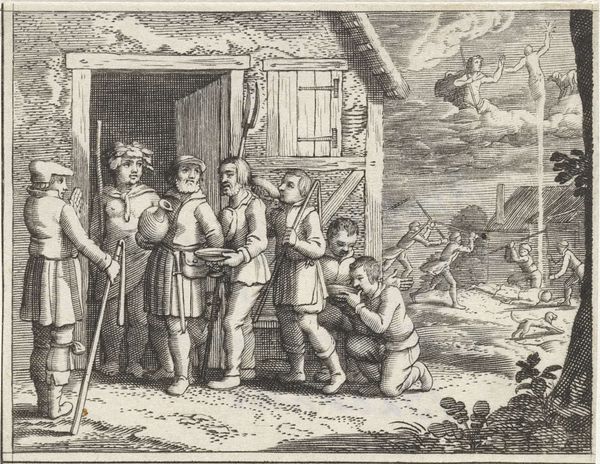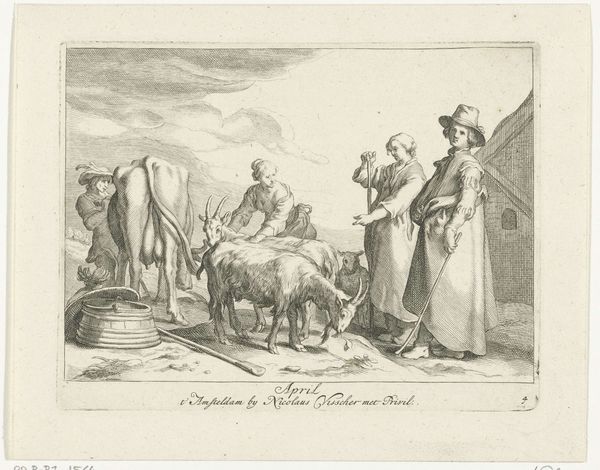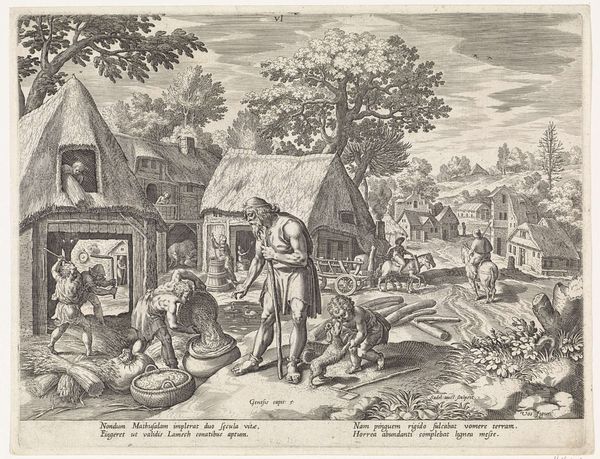
Gelijkenis van de Verloren Zoon: De verloren zoon als varkenshoeder c. 1579 - 1615
0:00
0:00
print, engraving
#
narrative-art
# print
#
pen illustration
#
old engraving style
#
landscape
#
figuration
#
genre-painting
#
northern-renaissance
#
engraving
Dimensions: height 220 mm, width 145 mm
Copyright: Rijks Museum: Open Domain
This engraving of The Prodigal Son as a Swineherd was made by Dominicus Custos around the turn of the 17th century. Custos was a skilled printmaker, working with the traditional technique of engraving - cutting lines into a metal plate, inking it, and then using tremendous pressure to transfer the image to paper. Look closely and you can see how the varying densities of lines create a whole range of tone and texture. These tonal modulations result from the hand of the engraver and are a testimony to the labor involved in producing an image in this way. The subject matter of the prodigal son is relevant here as well. As the son’s story goes, he wasted his inheritance, and ended up doing one of the lowliest jobs imaginable: tending pigs. The engraving brings this biblical tale into the world of early capitalism, where labor and its rewards were very much on people's minds. The value isn't only in the final print, but also in the skilled work required to make it.
Comments
No comments
Be the first to comment and join the conversation on the ultimate creative platform.
